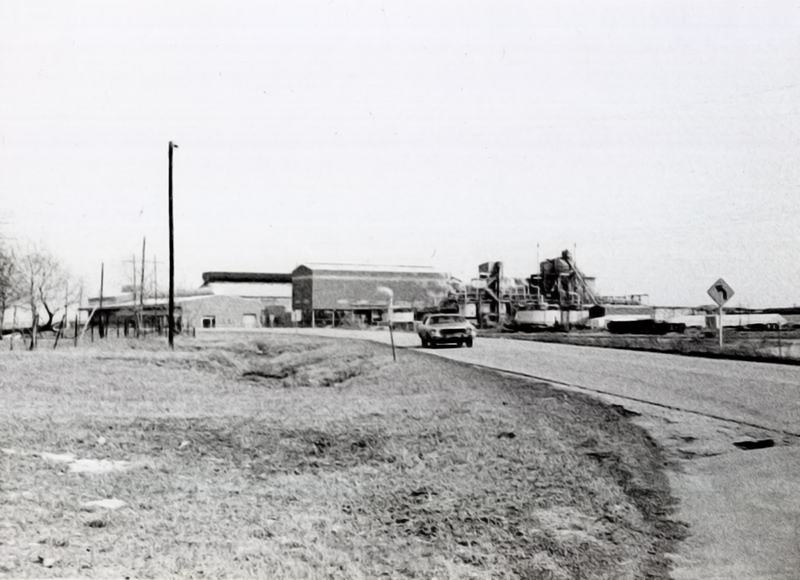
POLES.
In 1795 Poland ceased to exist as a state after Prussia, Russia, and Austria divided the land, leaving the populace under foreign rule. This was the last of three partitions that had begun in 1772. This circumstance, along with poor harvests and economic downturns throughout the nineteenth century, stimulated Polish immigration to the United States. In the 1870s the trickle of Polish newcomers significantly increased, and it doubled in the next decade. The greatest period of migration occurred between 1897 and 1913, with more than two million entering American ports.
Charles Radziminski, an early Polish immigrant who arrived in Virginia in 1834, left a legacy in Oklahoma. He later joined the U.S. Army, fought in the Mexican War, and served on the Texas frontier. Radziminski died in 1858, but his unit, the Second Cavalry, named an outpost Camp Radziminski in his honor. It was located first in present Tillman County and later in present Kiowa County, four miles northwest of Mountain Park/Svoboda. The latter location has been listed in the National Register of Historic Places (NR 72001067), and a nearby mountain is known unofficially as Mount Radziminski.
The Choctaw Nation's coal mines attracted a number of Poles, with some arriving by 1876. Many of these workers had not been miners in the Old World. In 1900 the U.S. census of Indian Territory registered 199 residents born in Poland, with 192 from the Russian sector. Most of them lived in the McAlester Mining District. The Poles tended to cluster in their own sections in the various mining communities. In Gowen they helped establish St. Teresa, a mission from Harthorne's Holy Rosary Catholic Church, and in 1909 they applied for a state charter for the Polish Society of Brotherly Love. In 1930 there were still 371 Polish-born residents in Oklahoma's coal-producing counties.
In 1892 ten Polish families traveled from Marche, Arkansas, to the present Harrah area, in Oklahoma County. By the end of the decade several other Poles had transplanted there. Community leaders placed an advertisement in a Chicago Polish-language newspaper, attracting more settlers. In 1897 the group initiated the founding of the Church of St. Teresa of Avila, with the original building completed the next year. These settlers' descendants continued as integral members of the Harrah community throughout the twentieth century. In 1978 they started a Polish Club to commemorate their traditions and stage public events.
In the early twentieth century the Bartlesville area also had an active Polish community. As the Tri-State Lead and Zinc District, which included northeastern Oklahoma, boomed before World War I, Bartlesville, Collinsville, Henryetta, and Sand Springs hosted smelters that heat-refined the ore into a marketable product. The industry recruited experienced Polish (and other European) workers from smelter towns in northern states. Most of the workers were segregated into settlements around Bartlesville, living in Fly Point, Skeeter Row, Frog Hollow, Smelter Town, Pruneville, and Border Town. The number of Polish families may have reached four hundred or more during the height of zinc production at the beginning of World War I. Oklahoma's zinc industry declined after the war, and a workers' strike and a deadly influenza outbreak in 1918–20 in the settlements drastically reduced Bartlesville's Polish population. Many returned to ethnic communities in other states.
The Roman Catholic Church has been a focal point for Poles throughout their history in Oklahoma. In addition to St. Teresa of Avila in Harrah and St. Teresa in Gowen, St. John's in Bartlesville and then St. Stanislaus Church (later the Little Flower Mission) in Collinsville held services in the Polish language. The Sisters of St. Felix of Cantalicio of the Third Order of St. Francis (Felician Sisters) was started in the Russian-controlled part of Poland in the 1850s and was recognized by the Vatican in 1874. The members soon spread to the United States. In 1946 they entered Oklahoma, working with schools and hospitals. In 1948 the Felician Sisters purchased the Ernest W. Marland estate in Ponca City from a group of Carmelite Fathers. They renamed it Assumption Villa. During World War II Nazis had confiscated the Felician headquarters in Poland, and the postwar political environment, unfriendly to religious groups, caused the order to relocate their international base to America. From 1950 until 1953 Assumption Villa served in that capacity. In 1975 the sisters sold the property and relocated to Albuquerque, New Mexico.
In the late 1940s and early 1950s Oklahoma Bishop Eugene J. McGuiness recruited several Polish-born priests to the Sooner State. Many of these so-called "refugee priests" had survived imprisonment at the hands of the Germans in World War II and a few had been persecuted by the Russian government. Again the postwar environment drew these Catholic leaders to America. One of these, Father Antoni Chojecki, also sponsored a number of Poles to immigrate to Oklahoma, and all but a few of them soon migrated to large Polish communities in cities such as Chicago. Many other Poles left their motherland during the era that the Soviet Union dominated the nations that lay behind the "Iron Curtain." Harrah's Polish Club sponsored a few of these refugees from communism in the 1980s.
In addition to Oklahoma's Poles who worked and lived in the Choctaw mining district, in Harrah, and in Bartlesville, some individuals had participated in the land runs, and many settled in the urban centers of Oklahoma City and Tulsa. In 1930 the state's Polish-born population stood at 3,888. This figure continued to decline throughout the twentieth century. In 1970 the combined number of Polish born and the first American-born generation registered 2,274. In 1978 local Poles established the Oklahoma City Polish-American Club, later changing the name to the Polonia Society to appeal to their compatriots throughout the state. In the 2000 U.S. Census 27,090 Oklahomans claimed Polish ancestry. Among these, Marian Opala, born in Poland, served on the Oklahoma Supreme Court.






